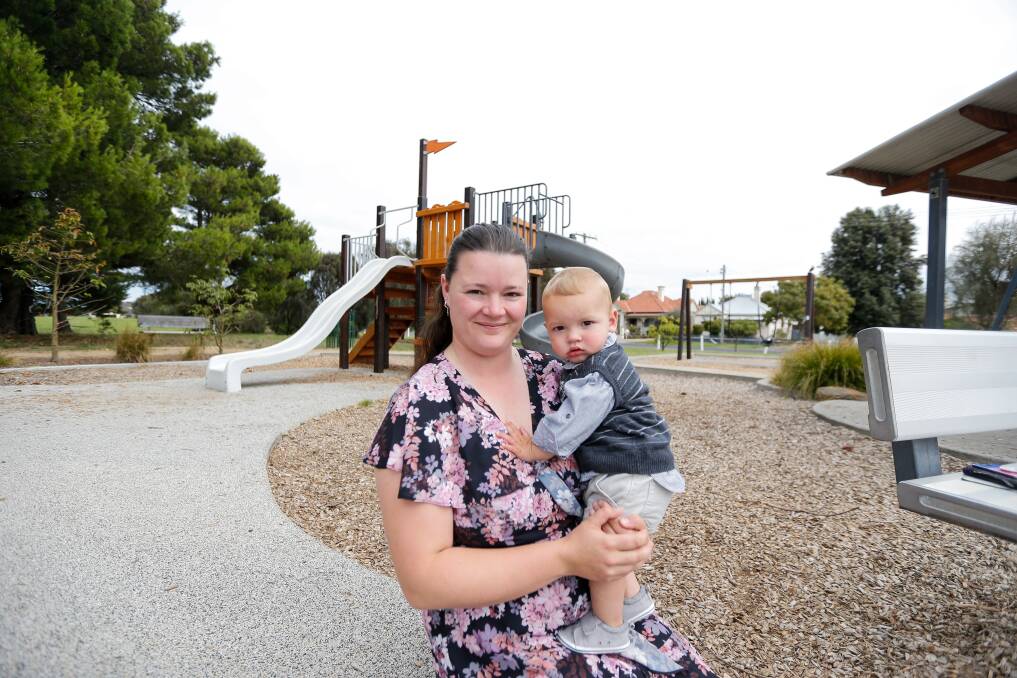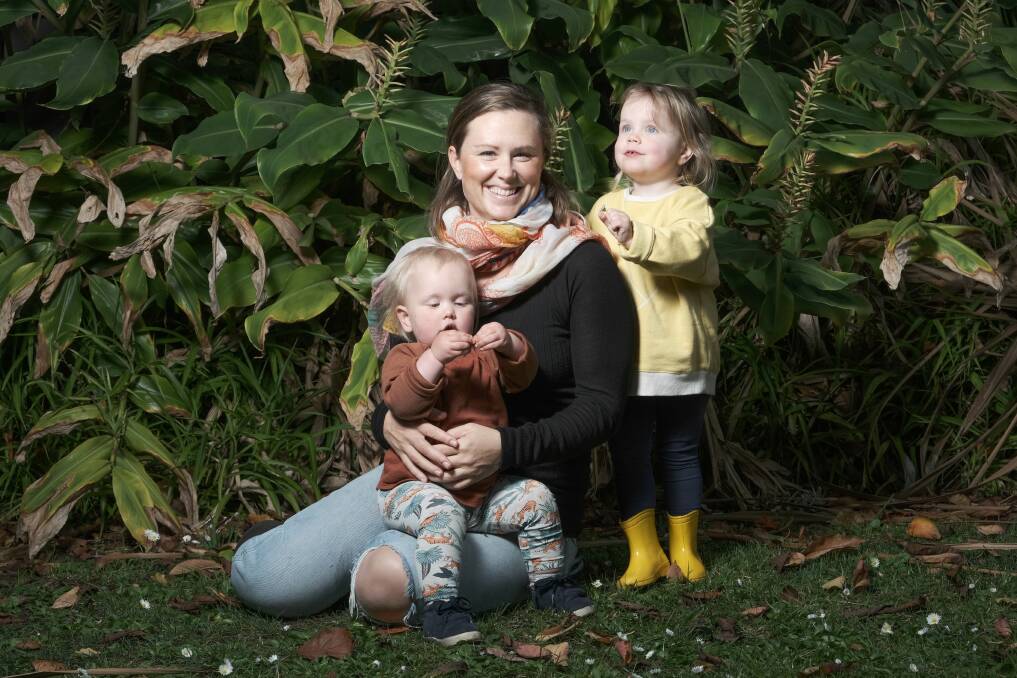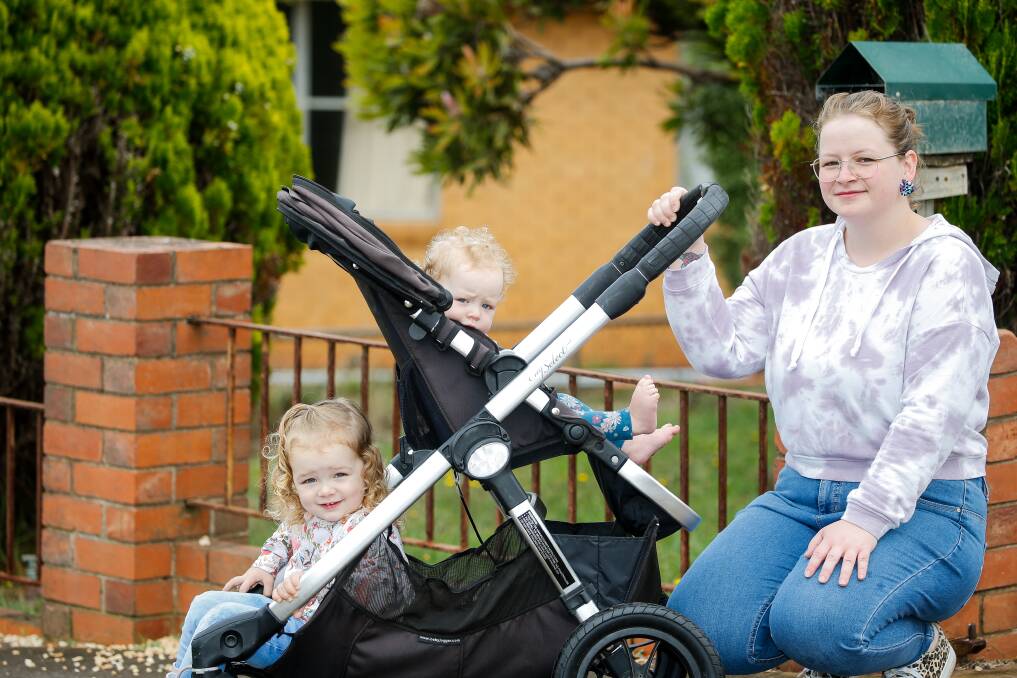
A wide-ranging study of nationwide childcare availability from Victoria University has revealed the south-west as the worst part of the state for finding care.
Subscribe now for unlimited access.
$0/
(min cost $0)
or signup to continue reading
The study - Deserts and Oases: How Accessible is Childcare in Australia - found the situation was so bad in the south-west that the region qualified as a "childcare desert".
An area was designated a childcare desert if there were more than three children (aged four and under) for every available childcare place.
The data, collected in December last year, showed the south-west had nearly 3.5 children for every available place, and within the region some areas were even worse.
In the southern half of Corangamite Shire there were nine children for every childcare place, while in the eastern half of Moyne Shire there were eight children for every place. Southern Grampians Shire was the worst in the region for accessing care, with 15 children for every available place.
Garvoc mother Wavealee Laird has had to send her 13-month-old son Kaedan to three different childcare locations, including one in Hamilton, 110km away.
"When I was five months pregnant I contacted every care provider, family day care, centre daycare, friends and family. I said 'I'm intending to go back to work when he's four or five months old what can we do?'
"They basically said 'You haven't contacted us soon enough' and I was like 'He's not born yet. I'm still pregnant'," Ms Laird said.
Moyne Shire's acting corporate and community services director Peter Brown said council-run centres were facing major issues because of a lack of qualified staff.
IN OTHER NEWS:
He said the shortage affected the whole industry, but had been compounded in Moyne by an influx of new residents.
"Demand has increased across all centres in the past two years when compared to five years ago. There is a mix of factors leading to this but it does seem to be an increase in families relocating to the area," he said.
"At the moment council has no places for new families at our three centres. We have a waiting list for all days at Port Fairy, but it's difficult to calculate the exact waiting time across our centres given the varied circumstances such as days required and the flexibility of parents preferred days."
The situation was similar in Corangamite Shire, where wait times at its centres vary between 12 to 24 months, with about 60 children on the waitlist.
Council manager of community services Katie Hearn also pointed to a lack of qualified staff as a major issue.
"We have had a number of staff retire, take maternity leave and long service leave as well as reduce hours they are available to work. The pandemic has led to a fatigued workforce in many sectors including early years education and care," Ms Hearn said.
The Victoria University study was careful to account for travel times when deciding whether a childcare centre was truly "accessible" for working families. For regional areas a centre needed to be within a 20 minute drive in order to qualify as accessible.
Ms Hearn said true accessibility was an issue Corangamite Shire was working hard to address.
"Council provides a number of childcare options and decentralised services so families don't have to travel long distances," she said.
"Our mobile childcare service, for children from six months to six years, operate from Port Campbell, Ecklin, Glenormiston, Derrinallum, Lismore and Skipton."
The study found childcare access was better in Warrnambool than in its more sparsely populated neighbours, with demand sitting just below three children per childcare place. But many mothers were still finding it difficult to find spots, and in many cases it was keeping them out of the workforce.

Jo Barton said she couldn't return to her previous job as a teacher at a residential school due to the lack of available day care.
"I'm doing different work," she said. "I'm working nights at my old job just casually because we can't get care."
She said there were some contracts she would have taken but couldn't due to their current care situation.
She had her name down at three council centres and enquired at Warrnambool's Honeypot Child Care but opted not to add to its growing wait list.
"I tried at Honeypot and they said their waiting list was 190 families so who knows how many kids that is?" Ms Barton said.
Bonnie Purchase said she wanted to work more hours but the lack of childcare prevented it.
"I'm on a few wait lists but there's nothing so far," she said.
Ms Purchase was working three nights a week at a supermarket to fit in with her partner Shaun's work schedule.
"I really hate working nights but I don't have any other option... It is what it is until we can get daycare."

The study found the availability of childcare in an area was strongly correlated with the workforce participation of mothers with young children. The areas that were graded as childcare deserts also had low rates of working mothers.
For areas like Warrnambool where jobs are plentiful and employers are crying out for workers, it only adds to the problem.
Lactation expert Barb Glare has seen countless young mothers as vice president of the Warrnambool Breastfeeding Centre and said there was "a huge amount of pressure" for mothers to get back to work.
She said the lack of childcare often led to young mothers search for and taking a childcare place when their baby was still very young, because they were scared of missing out.
"I think with a lot of things there's a different fit for every family and trying to push everyone into a cookie cutter kind of thing just doesn't work," Ms Glare said.
"Childcare really needs to be more flexible so women aren't pushed into making these decisions."
The study said flexibility was often out of reach because childcare resources were so stretched, especially in childcare deserts.
But it said "it doesn't have to be like this" and that government investment in the sector would "pay for itself" because of the workforce productivity that would result from young mothers getting back to work.
It also said investment would help eliminate childcare deserts, ensuring children had equal access to childcare "regardless of where they live or the income of their parents".
Our journalists work hard to provide local, up-to-date news to the community. This is how you can access our trusted content:
- Bookmark https://www.standard.net.au/
- Make sure you are signed up for our breaking and regular headlines and newsletters
- Follow us on Facebook, Twitter, Instagram and LinkedIn
- Tap here to open our Google News page.
- Join our Courts and Crime Facebook group and our dedicated Sport Facebook group
- Subscribe
Now just one tap with our new app: Digital subscribers now have the convenience of faster news, right at your fingertips with The Standard:
Have you signed up to The Standard's daily newsletter and breaking news emails? You can register below and make sure you are up to date with everything that's happening in the south-west.


